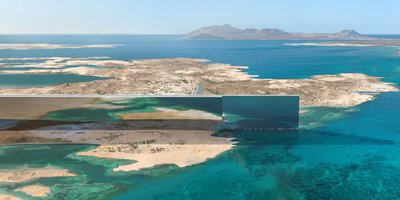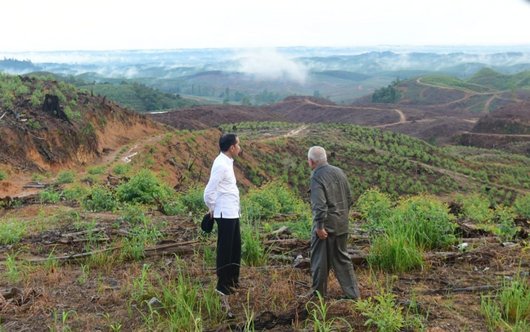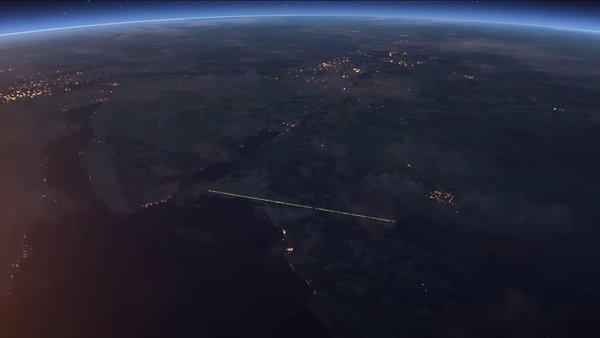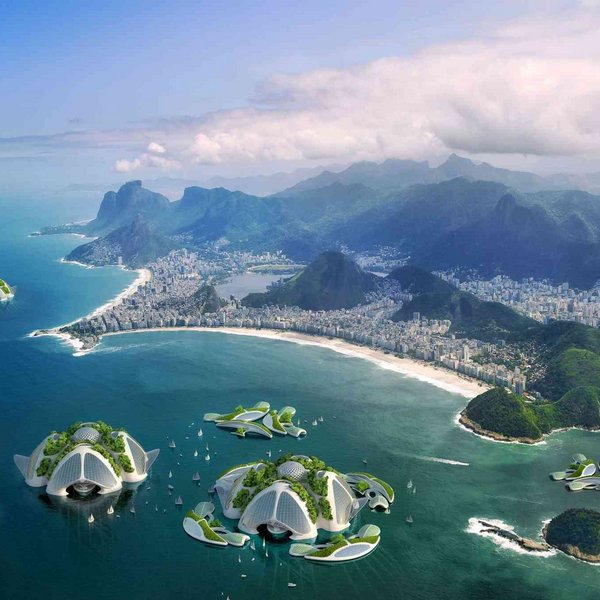

Top 3: Cities of the future
According to the World Meteorological Organization, WMO for short, sea levels rose by almost 10mm from January 2020 to the start of 2023. UN Secretary-General António Guterres warns that “megacities on every continent will face serious impacts”. Lagos, Bangkok, Mumbai, Shanghai, London, Buenos Aires and New York will be particularly affected. In addition to climate change, rapid population growth is also a major challenge for many cities. In order to guarantee social stability and security of supply for their inhabitants, the infrastructure of large cities must be constantly modernised. The alternative? A brand new city can be built instead.
3. Nusantara
Indonesia’s capital Jakarta is already at breaking point. In 2018 it was one of the “worst” cities in terms of traffic according to the TomTom Traffic Index. In addition to insufficient housing, a lack of infrastructure and congested roads, Jakarta has another challenge to contend with: Jakarta is sinking in the swampy soil at a rate of up to 25cm a year, disappearing under its own weight. The solution is now being built: Nusantara is the name of the new mega-city in eastern Borneo. A law has been passed to move Indonesia’s capital from Jakarta to Nusantara in January 2022. The budget is USD 34 bn. The first government institutions are set to move there as early as 2024. The move is expected to be completed in 2045. On an area of 256,000 ha, it is mainly eucalyptus plantations that will have to make way for the new planned city. However, according to the project management, 75% of the area will be planted with tropical plants. For this purpose, a nursery on site is growing more than 20 million native young trees per year. Nusantara’s water supply will be secured by the newly built Sepaku Semoi Dam. The present concept of the so-called Forest City includes corridors for wildlife such as orangutans. So that Nusantara never has to suffocate in traffic chaos, the planners are also pursuing the concept of the ten-minute city: All important nodes and points of contact for daily life will be accessible within ten minutes – on foot, by bicycle or by public transport. This is how Nusantara plans to become one of the most sustainable megacities in the world.


2. New capital for Egypt
Egypt’s capital is battling similar problems to Jakarta. Cairo’s infrastructure cannot cope with the influx. The roads are clogged, housing is in short supply. Rising water levels are endangering the megacity on the banks of the Nile and its 22 million inhabitants. Egypt’s answer to these pressing problems also resembles Indonesia’s: A new capital from scratch. Around 60km east of Cairo, a new metropolis has been under construction in the desert since 2015, the purpose of which is to relieve Cairo and maintain sufficient distance from the Nile and the coasts. On a total area of 725km², the new government city is being built with housing and infrastructure for around six million people. The costs are estimated at USD 45 bn. One landmark is the Iconic Tower. With its final height of 400m, it will be the tallest office building in Africa. The continent’s largest mosque and the largest cathedral are also located here. A high-speed train will connect the new city with Cairo and the Red Sea resorts. Green energy and cashless payment systems will ensure sustainability and increase security. By the end of the decade, the Egyptian government wants to have completed the resettlement as well. The Smart City does not yet have a name, although great progress has already been made on the construction as you can see here.
1. The Line
In the province of Tabuk, in northwestern Saudi Arabia, what may well be the most spectacular planned city is currently under construction. The Line is being built in the heart of the 26,500km² NEOM settlement project – on an area measuring just 34km²: 200m wide, 500m high and 170km long. According to the planners, 95% of the natural environment will remain untouched by urbanisation thanks to the city’s innovative linear and vertical orientation. The Line will be home to around nine million people. The unusual form allows for an efficient city of short distances. Neighbourhoods, parks and green spaces are layered vertically as is the infrastructure. People move seamlessly in three dimensions: Up, down and horizontally. This concept is known as Zero Gravity Urbanism. A high-speed train connects both ends of the city. All facilities in the metropolis can then be reached by train within 20 minutes and a walk of no more than five minutes. The skyline is also unique, as the metropolis will not have any skyscrapers rising into the clouds but will be completely surrounded by an exterior mirror façade, designed to blend in with nature.
Open spaces on multiple floors, according to the NEOM planning team, allow “equal access to pristine views of the surrounding natural landscape, mountains and sky – for everyone – and urban sprawl is avoided thanks to the lesser need for infrastructure”. The promise sounds almost too good to be true: “A place of unprecedented social and economic experimentation – free of pollution and traffic accidents – combined with world-class preventive healthcare so people live longer”. In this way, The Line is to become a kind of think tank and living lab for the city of tomorrow. Whether these promises are realistic is a source of controversy among architects and planners. Construction work is already underway. The project management is relying on modern technical planning logistics and modular construction. Some of the most renowned international architectural firms have been engaged for the buildings. These include OMA, Peri Cobb Freed & Partners, UNStudio, Coop Himmelb(l)au, HOK, Oyler Wu CollaborativeandDelugan Meissl Associated Architects.



![[Translate to Englisch:] (c) PORR [Translate to Englisch:] (c) PORR](/fileadmin/_processed_/3/3/csm_5V5A3742_4c8554371e.jpg)